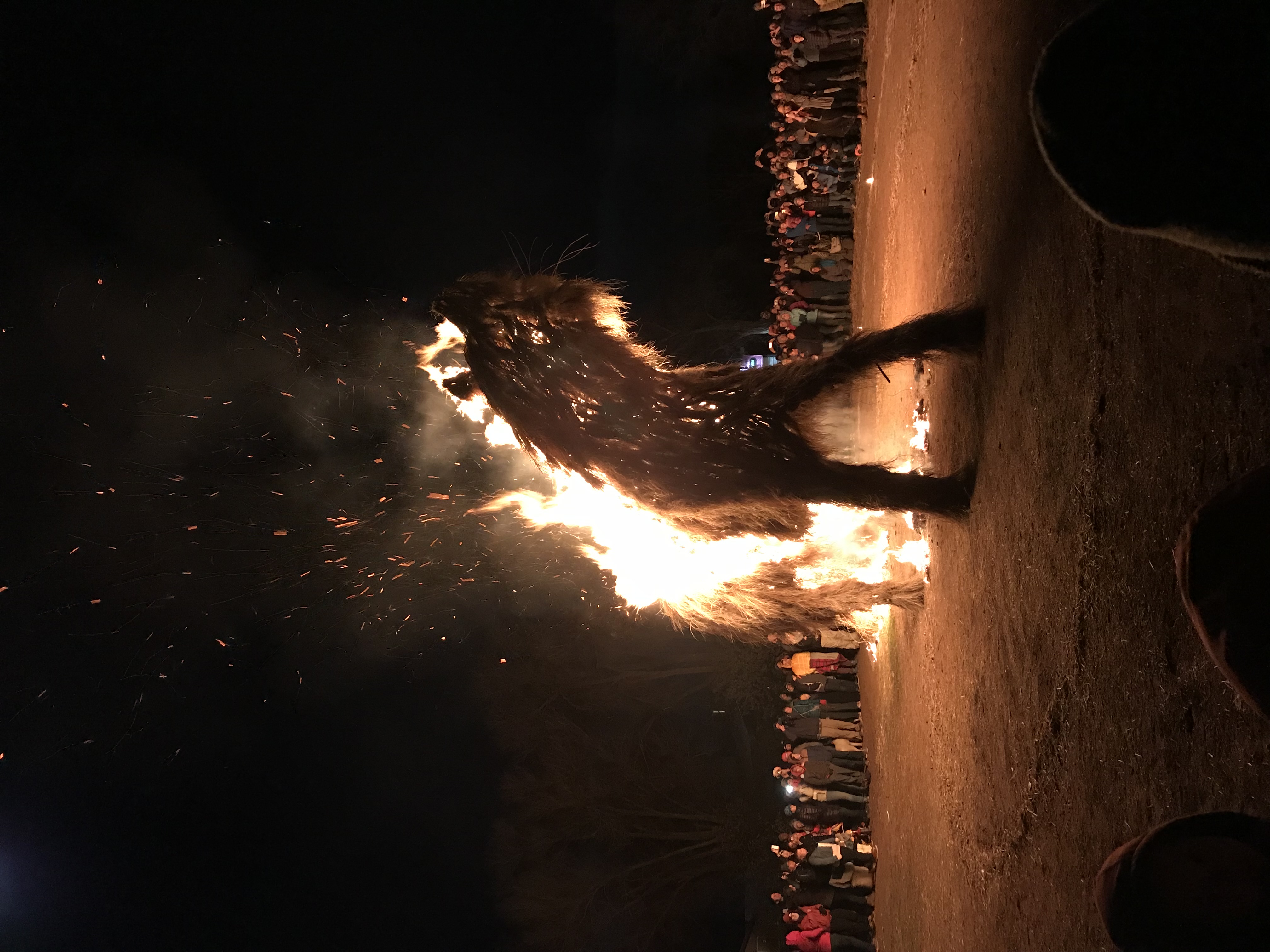
Joe Pachak has been an artist his whole life, and owned eight acres of land in Bluff since 1989. One of his projects is a unique community art collaboration of creating and burning effigies as part of an annual winter solstice celebration in Bluff.
He has helped design nine different effigies, and seen the events grow over the years to bring together locals and visitors to share a memorable ritual on the longest night of the year. Beginning in 2011 with a cow elk sculpture, the tradition continued with a mammoth in 2012, abstract rock/sand/water in 2013, Pleistocene Bison in 2014, Great Blue Heron in 2016, Dancing Bears in 2017, coyote in 2018, and embracing ravens in 2019. In 2022, the festival happened in Boulder, Utah, with a cow elk and calf. Starting around November, community members lend their time and sometimes materials to create these sculptures, which can reach 20 feet tall.
While the act of burning has been a powerful way to bring communities together, he’s recently decided to shift the focus a bit away from burning in favor of letting the materials return to the Earth.
Learn more about Joe and Bluff’s winter solstice tradition in our interview with him – and watch this video from one of the solstice celebrations!
How did all this start?
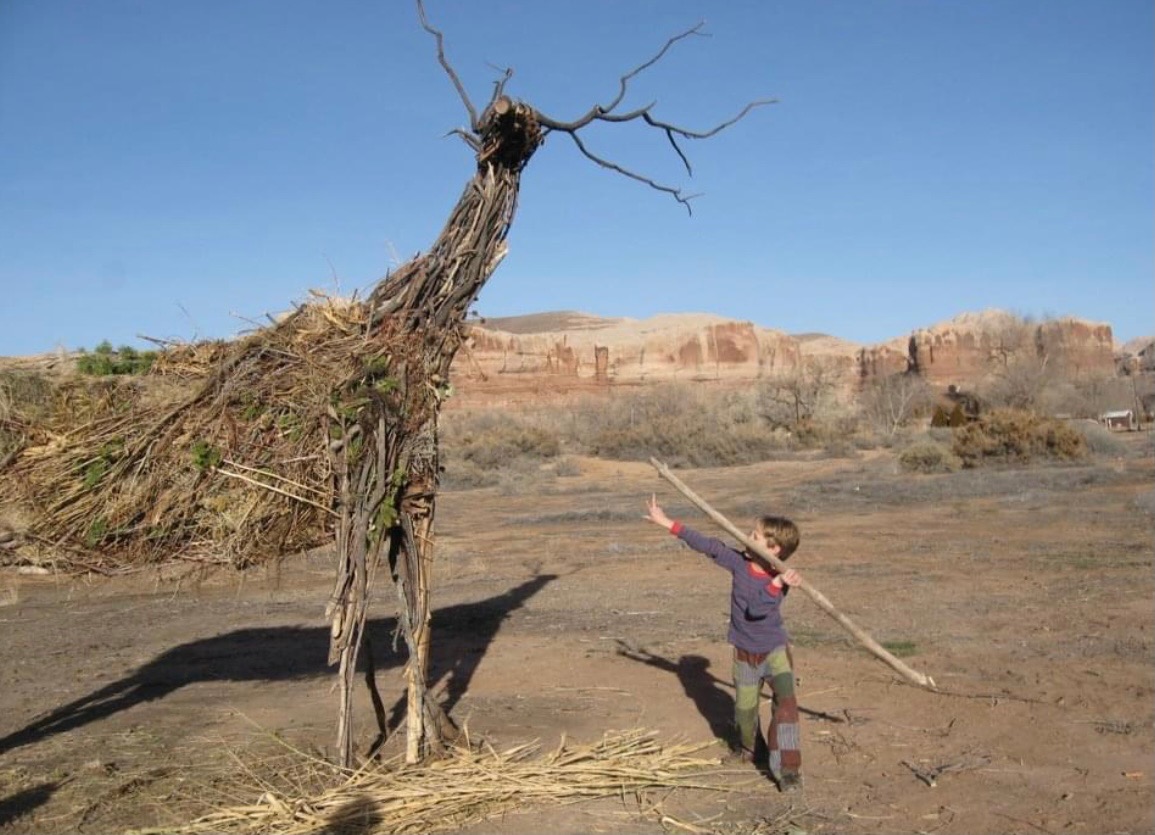
It started out with an elk, and the inspiration for it is, I grew up as a hunter, and I love to go into nature, and I did hunt elk with the bow and arrow for maybe five years. It was such an amazing experience, and I came up with the idea that I have to give something back. When I got back in town, I built a piece of sculpture out of sticks to represent an elk. And I asked Vaughn Hadenfeldt, who used to run the Bears Ears Partnership here, if he would join me to burn it on winter solstice. And he and 35 other people came, and we set it on fire, throwing darts at it, and both of us hit it at the same time. It was a very special and moving event for me.
How do you collaborate with community members?
It's really an exciting thing. I invite the people in the town to compost brush piles on my land, and I retrieve the sticks out of there. With some of the animals, we have to look for specialized sticks. And people donate old wire.
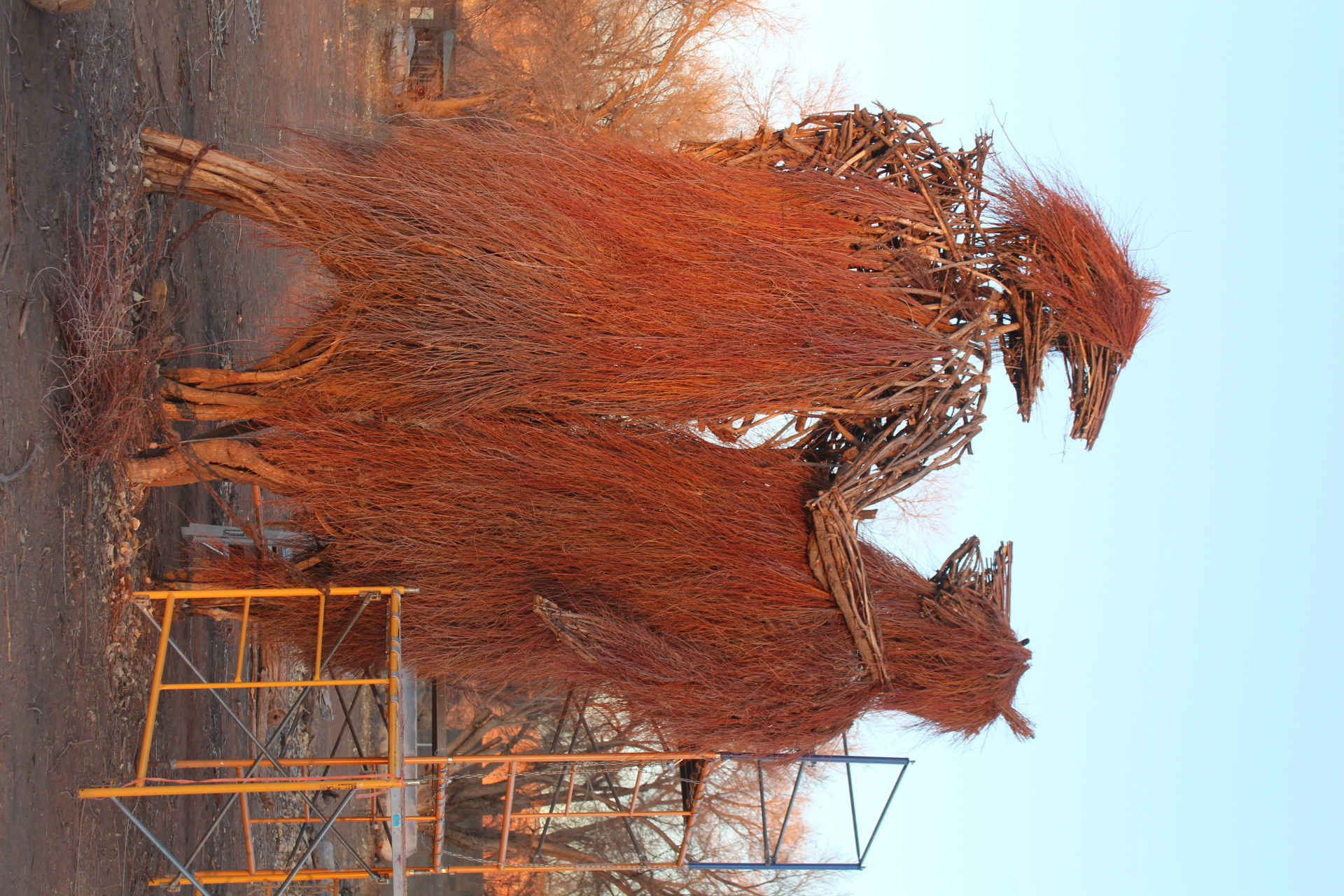
I ask people to bring pliers and I have a rule to make things safe. We have scaffolding, but a lot of the parts are built on the ground, and it's a requirement that no matter how long it is, each stick needs at least two tight pieces of wire.
So the whole thing is connected together in one unit, kind of like a community, the way it should work. Everything does, to me, go back to the community. The elk that I got with the bow and arrow went into the community as food. The Mammoth is a representative of a 14,000 year old culture that lived in our valley and left Clovis projectile points two miles from us, the great blue heron. They're definitely part of the community.
Also the great blue heron had a lot of involvement from people in the area. They came and camped here. It was a very difficult piece of sculpture. The two necks of the joined blue heron, one was a relaxed S shape, and the long neck blew down three times three days before the burn, and the Utah power company brought down a lift, a crane to lift the new, much more strongly built, neck and head into place, and donated their time to do it. And sometimes there were 20 people putting together mats, and school children from school groups came to help make the mats that were tied to the outside skin to look like the feathers. Some of those were made of grass, and some of them were made of sage that was trimmed from plants. So it looked very realistic.
What are these events like?
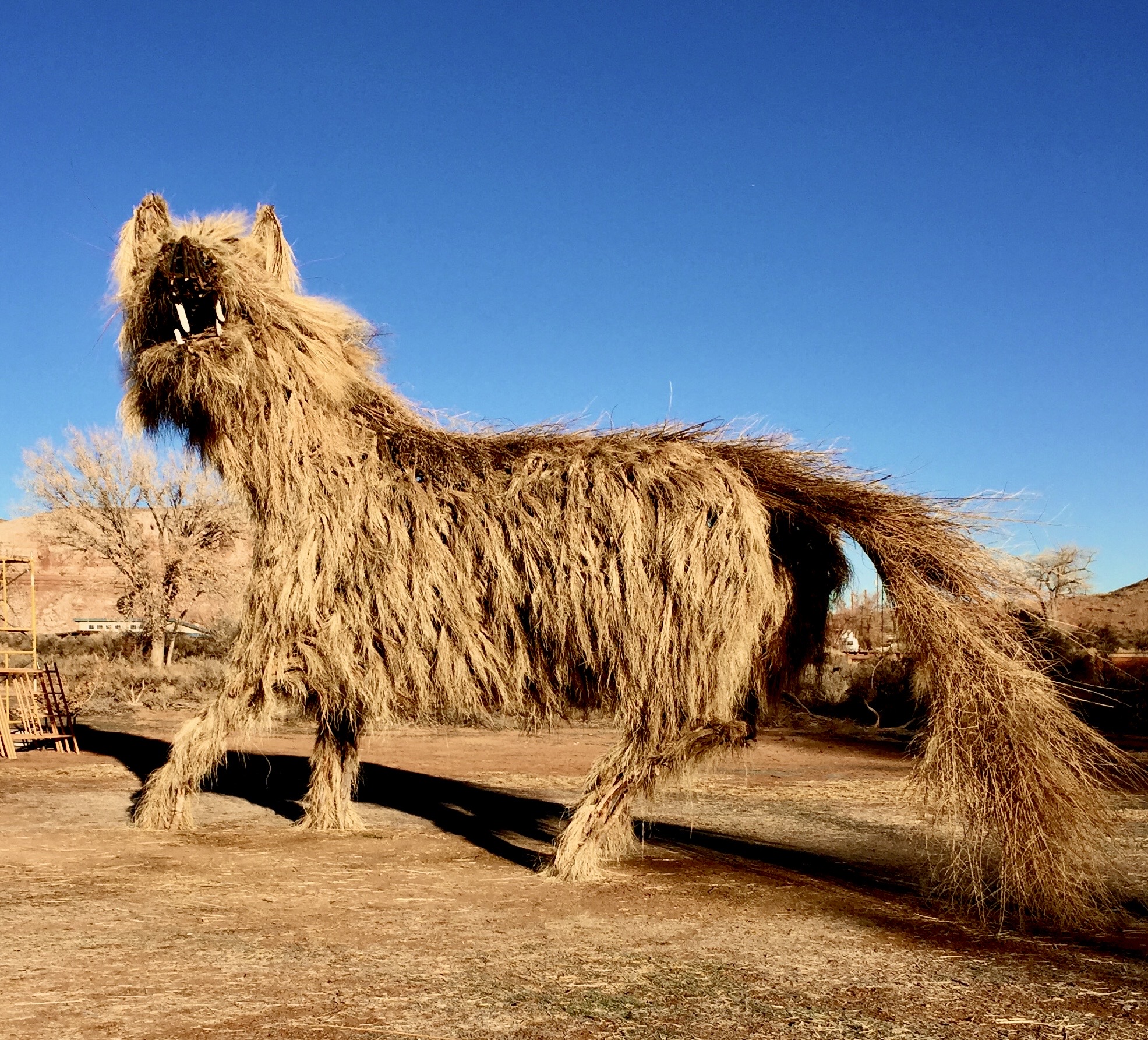
There are so many stories that happen. You get to be with the patriarchs and matriarchs of the town. Some of them are elderly, and we set up chairs for them to watch, and you get to walk around and talk to them. This is all about our temporary position here on Earth. We get to live to be 105 if we're very, very lucky, and if we take care of ourselves and we have good genetics and all, all of those factors, but life is a very temporary situation. So once a year to have this alignment, people from different countries come here and they see this thing being built, and they talk about it, and you mention summer and winter solstice and the prehistoric connections, and they say, oh, yeah, we have this thing in our country too. The whole world is bound together by these events.
Every time that we did this, more and more people came, and our community got better and stronger, and we actually taught ourselves how to feel more comfortable with people coming in, even though it was just one day out of the year. I think the day of the feast during one winter solstice, Cow Canyon Restaurant put together a feast and fed over 70 people in the restaurant in about three hours before the effigy burn. It was a very rowdy thing, with 700 people. And the embracing Raven went down to maybe 600 people. Great fun.
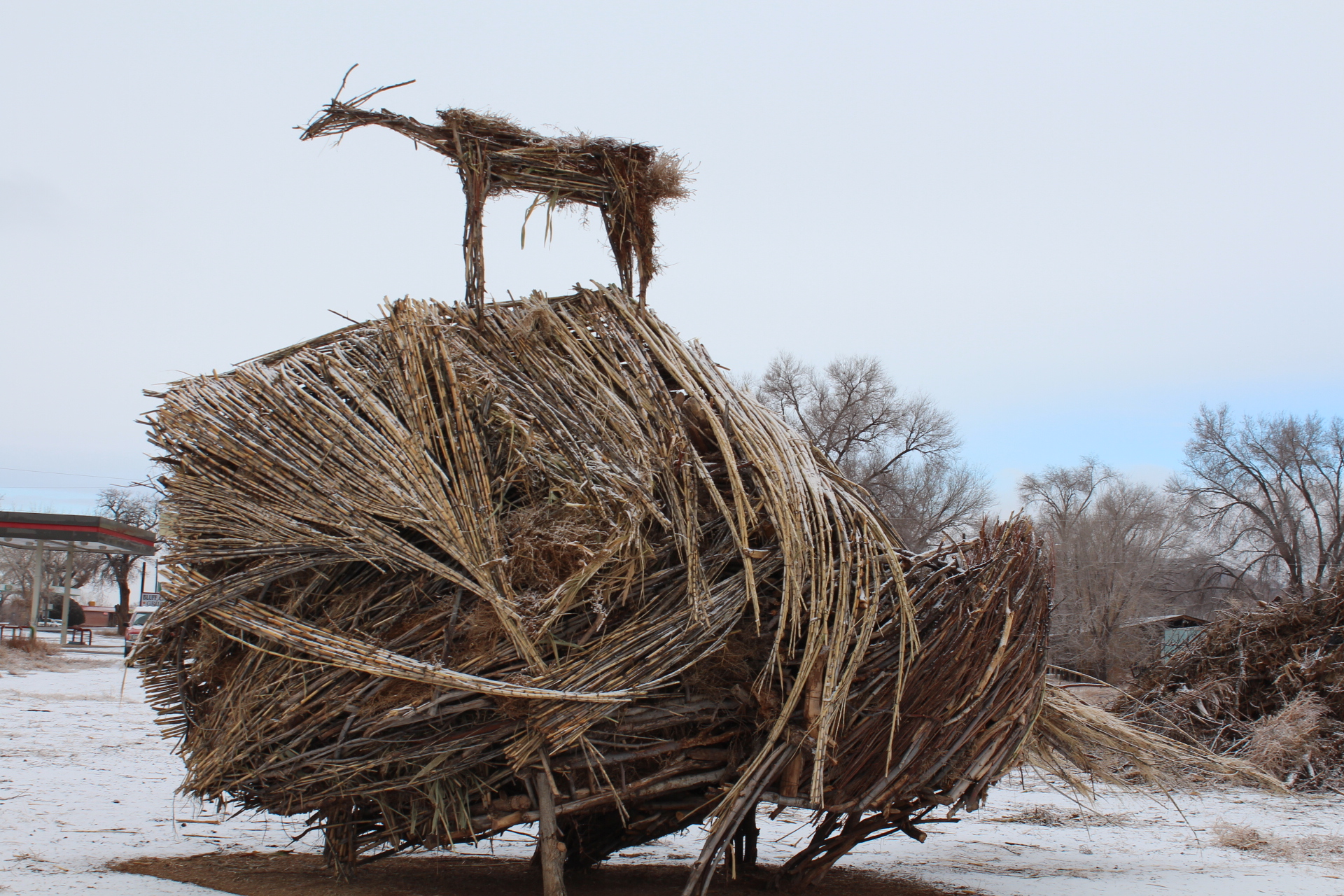
What’s next for you?
Burning in a limited way is actually needed for the plants that grow on Earth. It feeds. It's part of that system. But having it go back in to the earth is very important part of it, also, I'm hoping to connect it an organic piece of sculpture, perhaps in a human form this next time, and work with a theater group in town. I like to do set design, and actually, I believe these are set designs, but I would like to do a comedy and have it written by townspeople who are directors and actors, to talk about the situation the planet is on. I would like to see it addressed in a humorous way that changes minds about the severity of our problem.

